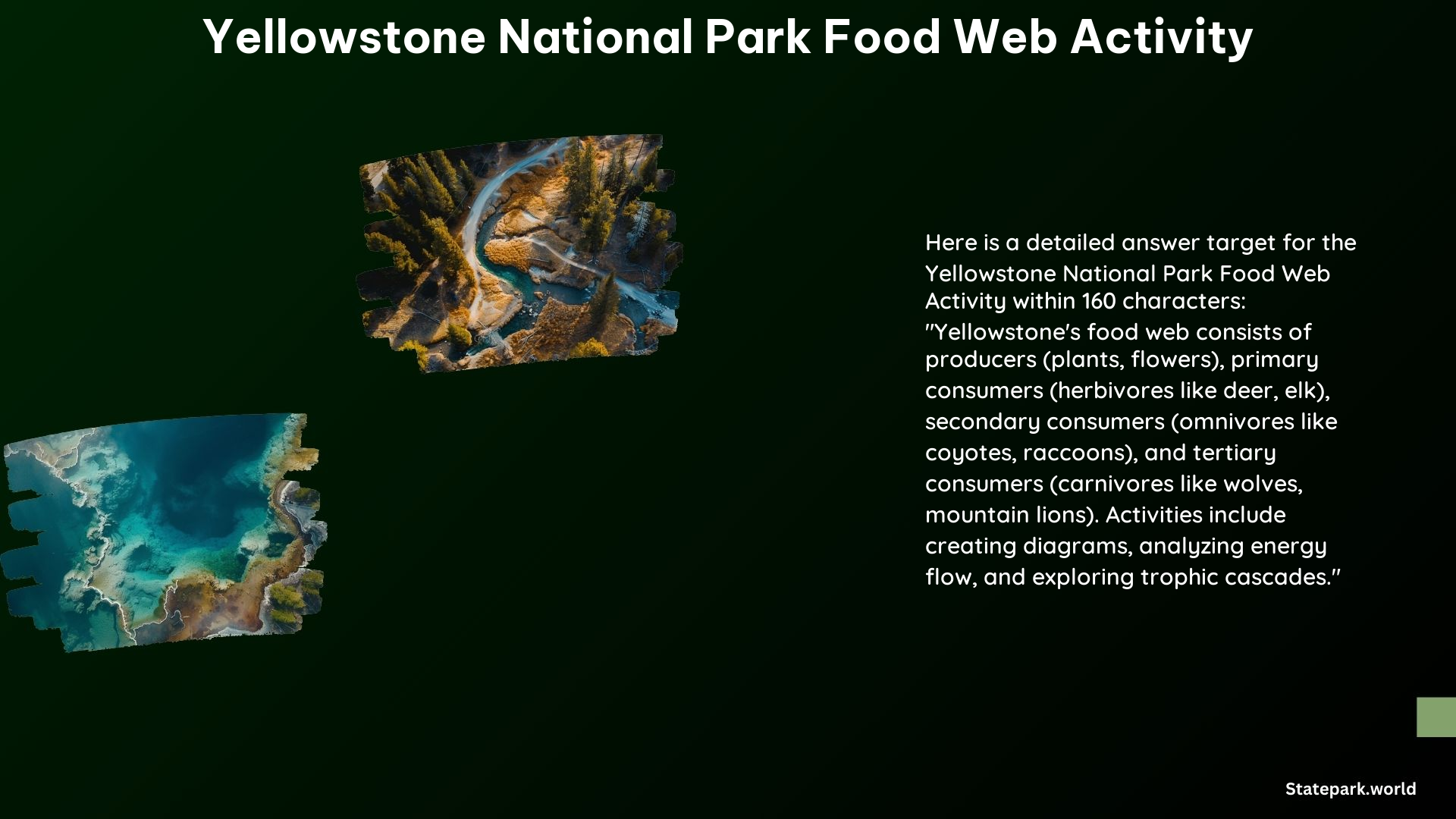The Yellowstone National Park food web activity is a comprehensive educational tool designed to help students understand the complex relationships within the park’s ecosystem. This activity allows students to explore the intricate web of interactions between producers, consumers, and decomposers, providing a deeper appreciation for the delicate balance that sustains the diverse life in Yellowstone.
Activities to Understand the Yellowstone National Park Food Web
Food Web Diagram
One of the core activities in understanding the Yellowstone National Park food web is the creation of a food web diagram. Students are tasked with cutting out squares representing different organisms and gluing them onto a large piece of paper, forming a circle. They then draw arrows to show the flow of energy between the organisms, with the arrow pointing towards the consuming animal. This hands-on activity helps students visualize the interconnectedness of the ecosystem and the various trophic levels.
Organism Classification
Another important aspect of the Yellowstone National Park food web activity is the classification of organisms. Students are asked to categorize each species as a producer, omnivore, carnivore, or herbivore based on their diet. This exercise helps students understand the different roles that various organisms play in the food web and how they contribute to the overall balance of the ecosystem. Students can color-code the organisms to further reinforce the distinctions between the different trophic levels.
Critical Thinking Exercises
The Yellowstone National Park food web activity also includes critical thinking exercises that challenge students to analyze the effects of removing or adding a species to the food web. By considering the potential consequences of such changes, students develop a deeper understanding of the ecosystem’s complexity and the importance of maintaining a delicate balance.
Interactive Lessons
To further engage students, teachers can incorporate interactive activities into the Yellowstone National Park food web lesson. For example, they can use a ball of yarn to represent the flow of energy, with each student holding the string according to what eats them. This hands-on approach helps students visualize the interconnectedness of the food web and the cascading effects that can occur when one element is altered.
Virtual Field Trips
In addition to the hands-on activities, the Yellowstone National Park food web lesson can be enhanced by virtual field trips to the park. These virtual experiences allow students to learn about the park’s features and the food web of its wildlife, providing a more immersive and engaging learning environment.
Cost and Timings

The cost of these Yellowstone National Park food web activities can vary, with some resources available for free and others ranging from $1.00 to $10.00. The time required for these activities can range from one to two 80-minute classes, depending on the depth and complexity of the lesson.
Key Concepts
Trophic Cascade
One of the key concepts explored in the Yellowstone National Park food web activity is the idea of a trophic cascade. The reintroduction of wolves in Yellowstone National Park led to a trophic cascade, affecting multiple species in the ecosystem. By understanding this concept, students can appreciate the far-reaching consequences of changes within the food web.
Keystone Species
Another important concept is the role of keystone species, such as wolves, in maintaining the balance of the Yellowstone National Park ecosystem. Students learn how the presence or absence of a keystone species can have a significant impact on the entire food web, highlighting the importance of preserving and protecting these critical components of the ecosystem.
References
- Teaching BetterLesson. (n.d.). Fifth Grade Lesson Yellowstone National Park Food Web. Retrieved from https://teaching.betterlesson.com/lesson/632180/yellowstone-national-park-food-web
- eePRO. (2014, December 13). Food Web of Yellowstone Worksheet and Activity. Retrieved from https://eepro.naaee.org/resource/food-web-yellowstone-worksheet-and-activity
- Teachers Pay Teachers. (n.d.). Yellowstone National Park Food Web. Retrieved from https://www.teacherspayteachers.com/browse?search=yellow+stone+national+park+food+web
- Yellowstone Info. (n.d.). Food Web – Yellowstone National Park. Retrieved from https://yellowstoneinfo.weebly.com/food-web.html
- Wolf Quest. (n.d.). Yellowstone Food Web. Retrieved from https://www.wolfquest.org/pdfs/Yellowstone%20Food%20Web.pdf
